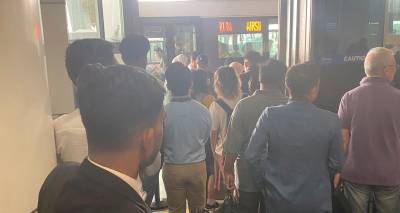THE country’s Kuala Lumpur International Airport (KLIA) faces fresh embarrassment as its newly upgraded aerotrain experienced its second malfunction since resuming operations on July 1, leaving travelers stranded and questioning the effectiveness of the RM456 million renovation project.
Social media user @afiqmukhtar highlighted the incident on X (formerly Twitter), sharing images of frustrated passengers walking toward airport exits after the aerotrain failed to transport them between Terminal 1’s Main Terminal and Satellite Building.
The disgruntled passenger tagged Prime Minister Anwar Ibrahim, Transport Minister Anthony Loke, and Malaysia Airports Holdings Berhad (MAHB) in his post, expressing anger over the system’s repeated failures despite the massive financial investment.
According to China Press, a passenger said that shuttle bus services were deployed to transport passengers during the disruption.
The passenger identified only as Zhang mentioned being en route to Hong Kong when the unexpected breakdown occurred.
At the of writing MAHB has yet to issue any response to the latest incident.
This marks the second major disruption since the aerotrain’s highly anticipated return to service, with the first breakdown occurring just one day after the July 1 relaunch.
The initial malfunction was initially attributed to a passenger allegedly holding doors open, causing the system to jam. However, MAHB later clarified that water accumulation in the tunnel due to heavy rainfall was the actual cause, necessitating manual clearing operations and safety inspections before services could resume.
The aerotrain system, which had been KLIA’s primary internal transport link since 1998, was out of service from early 2023, forcing passengers to rely on shuttle buses for connectivity between the main terminal and satellite building used primarily for international flights.
The recurring technical issues have raised serious questions about the upgrade project’s execution and the system’s long-term reliability, particularly given the substantial public investment involved.
